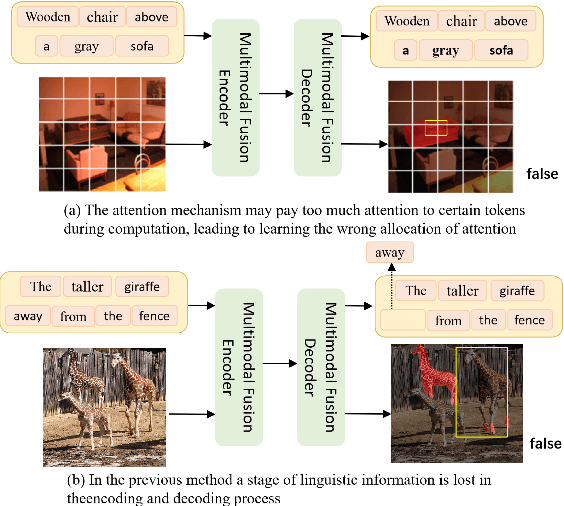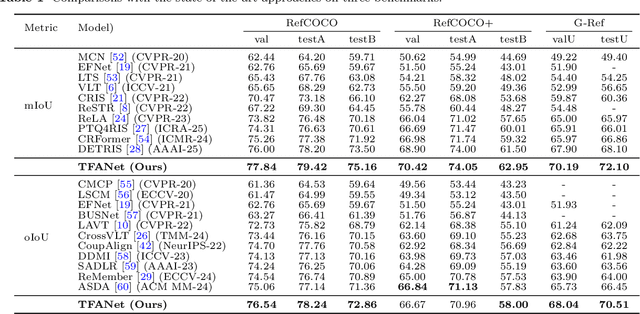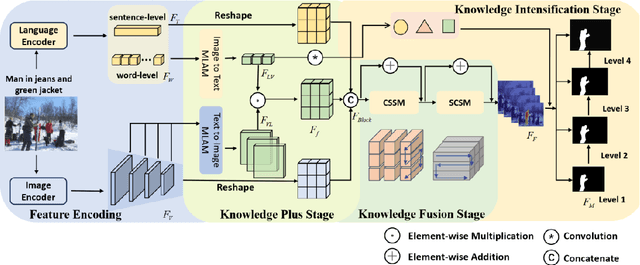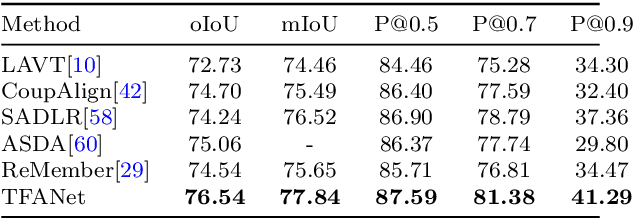Yan Chen
DRPO: Efficient Reasoning via Decoupled Reward Policy Optimization
Oct 06, 2025Abstract:Recent large reasoning models (LRMs) driven by reinforcement learning algorithms (e.g., GRPO) have achieved remarkable performance on challenging reasoning tasks. However, these models suffer from overthinking, generating unnecessarily long and redundant reasoning even for simple questions, which substantially increases computational cost and response latency. While existing methods incorporate length rewards to GRPO to promote concise reasoning, they incur significant performance degradation. We identify the root cause: when rewards for correct but long rollouts are penalized, GRPO's group-relative advantage function can assign them negative advantages, actively discouraging valid reasoning. To overcome this, we propose Decoupled Reward Policy Optimization (DRPO), a novel framework that decouples the length-based learning signal of correct rollouts from incorrect ones. DRPO ensures that reward signals for correct rollouts are normalized solely within the positive group, shielding them from interference by negative samples. The DRPO's objective is grounded in integrating an optimized positive data distribution, which maximizes length-based rewards under a KL regularization, into a discriminative objective. We derive a closed-form solution for this distribution, enabling efficient computation of the objective and its gradients using only on-policy data and importance weighting. Of independent interest, this formulation is general and can incorporate other preference rewards of positive data beyond length. Experiments on mathematical reasoning tasks demonstrate DRPO's significant superiority over six efficient reasoning baselines. Notably, with a 1.5B model, our method achieves 77\% length reduction with only 1.1\% performance loss on simple questions like GSM8k dataset, while the follow-up baseline sacrifices 4.3\% for 68\% length reduction.
Automating Modelica Module Generation Using Large Language Models: A Case Study on Building Control Description Language
Sep 18, 2025Abstract:Dynamic energy systems and controls require advanced modeling frameworks to design and test supervisory and fault tolerant strategies. Modelica is a widely used equation based language, but developing control modules is labor intensive and requires specialized expertise. This paper examines the use of large language models (LLMs) to automate the generation of Control Description Language modules in the Building Modelica Library as a case study. We developed a structured workflow that combines standardized prompt scaffolds, library aware grounding, automated compilation with OpenModelica, and human in the loop evaluation. Experiments were carried out on four basic logic tasks (And, Or, Not, and Switch) and five control modules (chiller enable/disable, bypass valve control, cooling tower fan speed, plant requests, and relief damper control). The results showed that GPT 4o failed to produce executable Modelica code in zero shot mode, while Claude Sonnet 4 achieved up to full success for basic logic blocks with carefully engineered prompts. For control modules, success rates reached 83 percent, and failed outputs required medium level human repair (estimated one to eight hours). Retrieval augmented generation often produced mismatches in module selection (for example, And retrieved as Or), while a deterministic hard rule search strategy avoided these errors. Human evaluation also outperformed AI evaluation, since current LLMs cannot assess simulation results or validate behavioral correctness. Despite these limitations, the LLM assisted workflow reduced the average development time from 10 to 20 hours down to 4 to 6 hours per module, corresponding to 40 to 60 percent time savings. These results highlight both the potential and current limitations of LLM assisted Modelica generation, and point to future research in pre simulation validation, stronger grounding, and closed loop evaluation.
TFANet: Three-Stage Image-Text Feature Alignment Network for Robust Referring Image Segmentation
Sep 16, 2025



Abstract:Referring Image Segmentation (RIS) is a task that segments image regions based on language expressions, requiring fine-grained alignment between two modalities. However, existing methods often struggle with multimodal misalignment and language semantic loss, especially in complex scenes containing multiple visually similar objects, where uniquely described targets are frequently mislocalized or incompletely segmented. To tackle these challenges, this paper proposes TFANet, a Three-stage Image-Text Feature Alignment Network that systematically enhances multimodal alignment through a hierarchical framework comprising three stages: Knowledge Plus Stage (KPS), Knowledge Fusion Stage (KFS), and Knowledge Intensification Stage (KIS). In the first stage, we design the Multiscale Linear Cross-Attention Module (MLAM), which facilitates bidirectional semantic exchange between visual features and textual representations across multiple scales. This establishes rich and efficient alignment between image regions and different granularities of linguistic descriptions. Subsequently, the KFS further strengthens feature alignment through the Cross-modal Feature Scanning Module (CFSM), which applies multimodal selective scanning to capture long-range dependencies and construct a unified multimodal representation. This is essential for modeling long-range cross-modal dependencies and enhancing alignment accuracy in complex scenes. Finally, in the KIS, we propose the Word-level Linguistic Feature-guided Semantic Deepening Module (WFDM) to compensate for semantic degradation introduced in earlier stages.
Perception Before Reasoning: Two-Stage Reinforcement Learning for Visual Reasoning in Vision-Language Models
Sep 16, 2025Abstract:Reinforcement learning (RL) has proven highly effective in eliciting the reasoning capabilities of large language models (LLMs). Inspired by this success, recent studies have explored applying similar techniques to vision-language models (VLMs), aiming to enhance their reasoning performance. However, directly transplanting RL methods from LLMs to VLMs is suboptimal, as the tasks faced by VLMs are inherently more complex. Specifically, VLMs must first accurately perceive and understand visual inputs before reasoning can be effectively performed. To address this challenge, we propose a two-stage reinforcement learning framework designed to jointly enhance both the perceptual and reasoning capabilities of VLMs. To mitigate the vanishing advantage issue commonly observed in RL training, we first perform dataset-level sampling to selectively strengthen specific capabilities using distinct data sources. During training, the first stage focuses on improving the model's visual perception through coarse- and fine-grained visual understanding, while the second stage targets the enhancement of reasoning abilities. After the proposed two-stage reinforcement learning process, we obtain PeBR-R1, a vision-language model with significantly enhanced perceptual and reasoning capabilities. Experimental results on seven benchmark datasets demonstrate the effectiveness of our approach and validate the superior performance of PeBR-R1 across diverse visual reasoning tasks.
RDDM: Practicing RAW Domain Diffusion Model for Real-world Image Restoration
Aug 26, 2025Abstract:We present the RAW domain diffusion model (RDDM), an end-to-end diffusion model that restores photo-realistic images directly from the sensor RAW data. While recent sRGB-domain diffusion methods achieve impressive results, they are caught in a dilemma between high fidelity and realistic generation. As these models process lossy sRGB inputs and neglect the accessibility of the sensor RAW images in many scenarios, e.g., in image and video capturing in edge devices, resulting in sub-optimal performance. RDDM bypasses this limitation by directly restoring images in the RAW domain, replacing the conventional two-stage image signal processing (ISP) + IR pipeline. However, a simple adaptation of pre-trained diffusion models to the RAW domain confronts the out-of-distribution (OOD) issues. To this end, we propose: (1) a RAW-domain VAE (RVAE) learning optimal latent representations, (2) a differentiable Post Tone Processing (PTP) module enabling joint RAW and sRGB space optimization. To compensate for the deficiency in the dataset, we develop a scalable degradation pipeline synthesizing RAW LQ-HQ pairs from existing sRGB datasets for large-scale training. Furthermore, we devise a configurable multi-bayer (CMB) LoRA module handling diverse RAW patterns such as RGGB, BGGR, etc. Extensive experiments demonstrate RDDM's superiority over state-of-the-art sRGB diffusion methods, yielding higher fidelity results with fewer artifacts.
Semantic Energy: Detecting LLM Hallucination Beyond Entropy
Aug 20, 2025Abstract:Large Language Models (LLMs) are being increasingly deployed in real-world applications, but they remain susceptible to hallucinations, which produce fluent yet incorrect responses and lead to erroneous decision-making. Uncertainty estimation is a feasible approach to detect such hallucinations. For example, semantic entropy estimates uncertainty by considering the semantic diversity across multiple sampled responses, thus identifying hallucinations. However, semantic entropy relies on post-softmax probabilities and fails to capture the model's inherent uncertainty, causing it to be ineffective in certain scenarios. To address this issue, we introduce Semantic Energy, a novel uncertainty estimation framework that leverages the inherent confidence of LLMs by operating directly on logits of penultimate layer. By combining semantic clustering with a Boltzmann-inspired energy distribution, our method better captures uncertainty in cases where semantic entropy fails. Experiments across multiple benchmarks show that Semantic Energy significantly improves hallucination detection and uncertainty estimation, offering more reliable signals for downstream applications such as hallucination detection.
Estimating 2D Camera Motion with Hybrid Motion Basis
Jul 30, 2025Abstract:Estimating 2D camera motion is a fundamental computer vision task that models the projection of 3D camera movements onto the 2D image plane. Current methods rely on either homography-based approaches, limited to planar scenes, or meshflow techniques that use grid-based local homographies but struggle with complex non-linear transformations. A key insight of our work is that combining flow fields from different homographies creates motion patterns that cannot be represented by any single homography. We introduce CamFlow, a novel framework that represents camera motion using hybrid motion bases: physical bases derived from camera geometry and stochastic bases for complex scenarios. Our approach includes a hybrid probabilistic loss function based on the Laplace distribution that enhances training robustness. For evaluation, we create a new benchmark by masking dynamic objects in existing optical flow datasets to isolate pure camera motion. Experiments show CamFlow outperforms state-of-the-art methods across diverse scenarios, demonstrating superior robustness and generalization in zero-shot settings. Code and datasets are available at our project page: https://lhaippp.github.io/CamFlow/.
Perception-Oriented Latent Coding for High-Performance Compressed Domain Semantic Inference
Jul 02, 2025Abstract:In recent years, compressed domain semantic inference has primarily relied on learned image coding models optimized for mean squared error (MSE). However, MSE-oriented optimization tends to yield latent spaces with limited semantic richness, which hinders effective semantic inference in downstream tasks. Moreover, achieving high performance with these models often requires fine-tuning the entire vision model, which is computationally intensive, especially for large models. To address these problems, we introduce Perception-Oriented Latent Coding (POLC), an approach that enriches the semantic content of latent features for high-performance compressed domain semantic inference. With the semantically rich latent space, POLC requires only a plug-and-play adapter for fine-tuning, significantly reducing the parameter count compared to previous MSE-oriented methods. Experimental results demonstrate that POLC achieves rate-perception performance comparable to state-of-the-art generative image coding methods while markedly enhancing performance in vision tasks, with minimal fine-tuning overhead. Code is available at https://github.com/NJUVISION/POLC.
DicFace: Dirichlet-Constrained Variational Codebook Learning for Temporally Coherent Video Face Restoration
Jun 16, 2025



Abstract:Video face restoration faces a critical challenge in maintaining temporal consistency while recovering fine facial details from degraded inputs. This paper presents a novel approach that extends Vector-Quantized Variational Autoencoders (VQ-VAEs), pretrained on static high-quality portraits, into a video restoration framework through variational latent space modeling. Our key innovation lies in reformulating discrete codebook representations as Dirichlet-distributed continuous variables, enabling probabilistic transitions between facial features across frames. A spatio-temporal Transformer architecture jointly models inter-frame dependencies and predicts latent distributions, while a Laplacian-constrained reconstruction loss combined with perceptual (LPIPS) regularization enhances both pixel accuracy and visual quality. Comprehensive evaluations on blind face restoration, video inpainting, and facial colorization tasks demonstrate state-of-the-art performance. This work establishes an effective paradigm for adapting intensive image priors, pretrained on high-quality images, to video restoration while addressing the critical challenge of flicker artifacts. The source code has been open-sourced and is available at https://github.com/fudan-generative-vision/DicFace.
Hallo4: High-Fidelity Dynamic Portrait Animation via Direct Preference Optimization and Temporal Motion Modulation
May 29, 2025Abstract:Generating highly dynamic and photorealistic portrait animations driven by audio and skeletal motion remains challenging due to the need for precise lip synchronization, natural facial expressions, and high-fidelity body motion dynamics. We propose a human-preference-aligned diffusion framework that addresses these challenges through two key innovations. First, we introduce direct preference optimization tailored for human-centric animation, leveraging a curated dataset of human preferences to align generated outputs with perceptual metrics for portrait motion-video alignment and naturalness of expression. Second, the proposed temporal motion modulation resolves spatiotemporal resolution mismatches by reshaping motion conditions into dimensionally aligned latent features through temporal channel redistribution and proportional feature expansion, preserving the fidelity of high-frequency motion details in diffusion-based synthesis. The proposed mechanism is complementary to existing UNet and DiT-based portrait diffusion approaches, and experiments demonstrate obvious improvements in lip-audio synchronization, expression vividness, body motion coherence over baseline methods, alongside notable gains in human preference metrics. Our model and source code can be found at: https://github.com/xyz123xyz456/hallo4.
 Add to Chrome
Add to Chrome Add to Firefox
Add to Firefox Add to Edge
Add to Edge